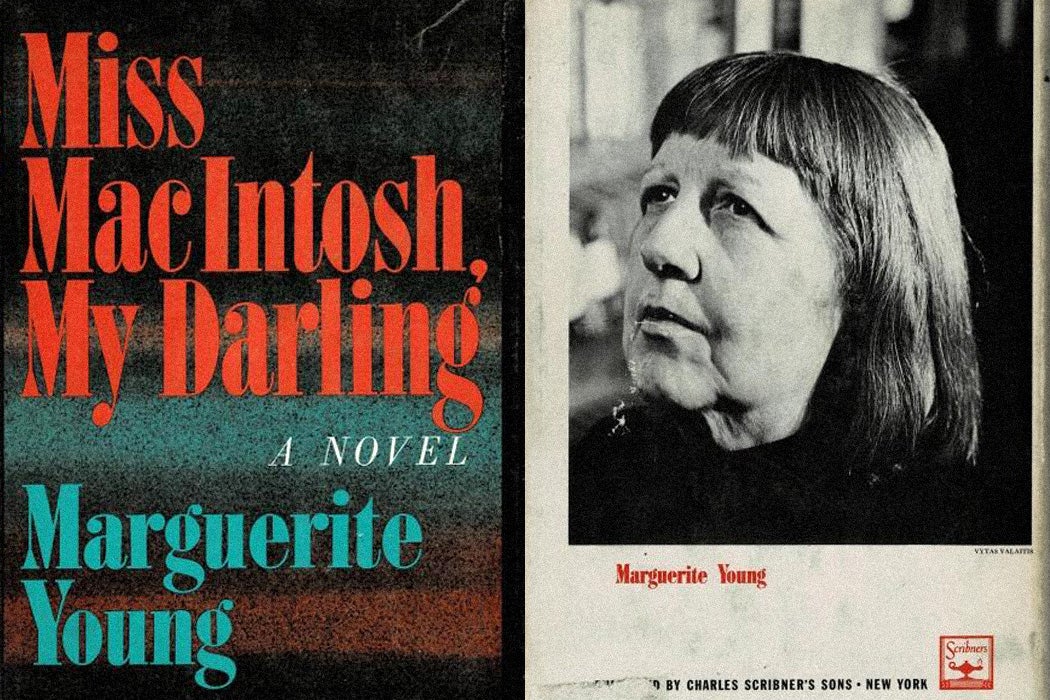So you’ve “finished” Netflix? Maybe it’s time for a run of long fiction to replace all the prestige TV. Options for bathing in oceans of words are legion. There’s Balzac, who completed ninety-one works for his interlinked La Comédie humaine. Or take Jules Verne’s Voyages extraordinaries, comprising fifty-four novels, of which Twenty Thousand Leagues Under the Sea is perhaps the most famous.
Or perhaps something more obscure? When Marguerite Young’s novel Miss MacIntosh, My Darling, was published in 1965, it weighed in at 1,198 pages. There’s a picture of Young hugging the stack of manuscript pages, which looks to be about a foot high.
But the length of Miss MacIntosh isn’t necessarily its defining feature. Describing the book’s “oblique kinships with Proust, Joyce, Faulkner, and Woolf,” critic Kenneth King calls it a “tantalizing challenge for adventuresome readers.”
“Exemplary for its intense, inextricable weaves of stream-of-consciousness modalities,” writes King, “it executes astonishing literary pirouettes—fantastical phantasmagoric transformations of time, space, and character that fascinate with a highly controlled literal mastery.”
Young (1908–1995) taught creative writing at several universities and was something of a Greenwich Village icon. In addition to Miss MacIntosh, she published volumes of poetry, short stories, essays, and history. Angel in the Forest is about two utopian efforts in nineteenth-century America. A book about the life and times of Socialist Eugene V. Debs was originally projected at three volumes, but remained uncompleted at the time of her death. (A version was published posthumously as Harp Song for a Radical.) It took Young eighteen years to finish Miss MacIntosh, My Darling.
Perhaps fittingly for a cult success of the late 1960s, the book is a trip, literally and figuratively. The narrator, Vera Cartwright, journeys by bus across the Midwest, toward the hometown of her beloved nursemaid, the titular Miss MacIntosh. That town, the wonderfully named What Cheer, is in fact a real place in Iowa (pop. 646 in the 2010 census).
King says that the novel, now almost forgotten, is “one of America’s most eccentric, incontrovertibly visionary, and incontestably original masterpieces,” akin to the work of an “outsider artist or art brut painter.”
Weekly Newsletter
Although it has all but disappeared from public knowledge, King writes that it deserves readers: “Imagine The One Thousand and One Arabian Nights poured into a cosmic blender, pulverized into its essential fluidic nutrients, and its viscosity converted into a deluxe literary nectar.” Forgotten works, writes King, are a challenge. But “rediscovering them bestows new benefits for future generations.”
Without spoiling Young’s ending, we can listen as King offers his ultimate endorsement: “if you think fusing poetry and prose is beyond the Herculean, and desire an exhilarating challenge,” this book may be for you.
Support JSTOR Daily! Join our new membership program on Patreon today.







